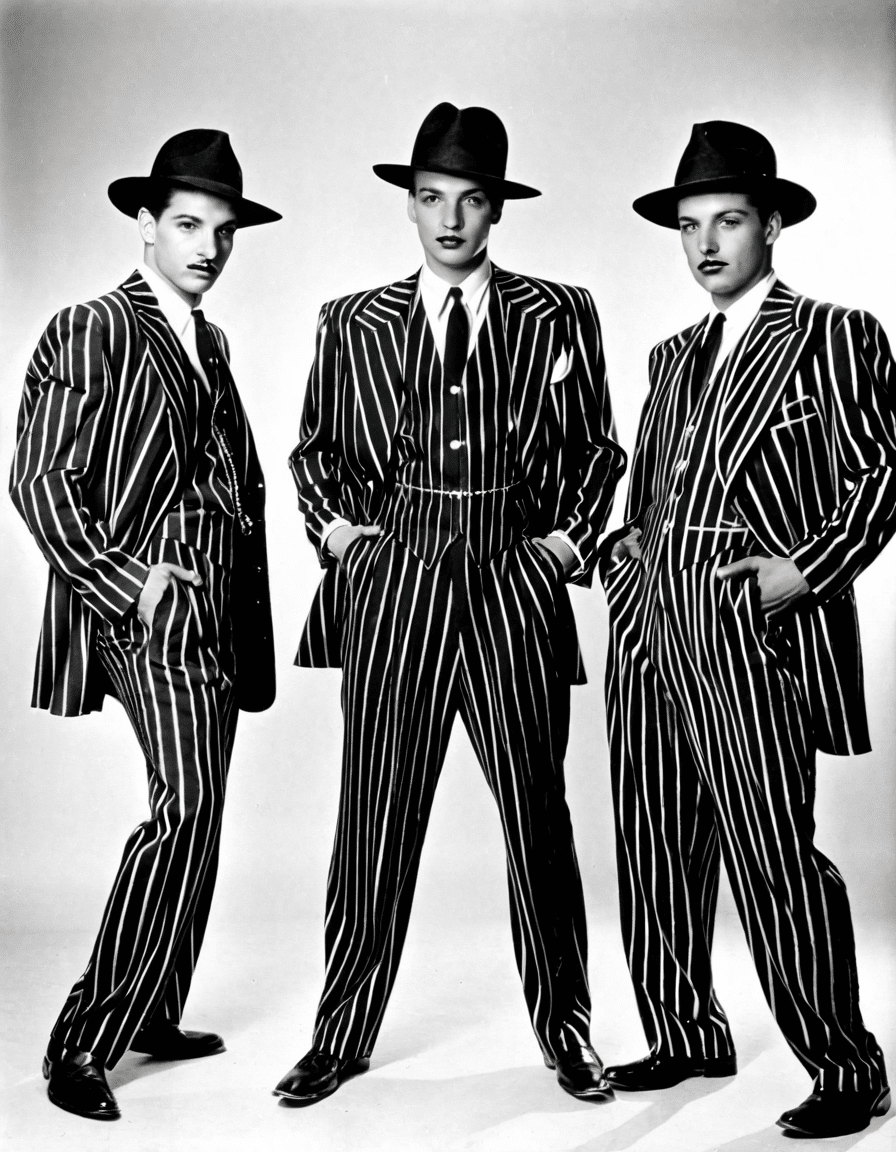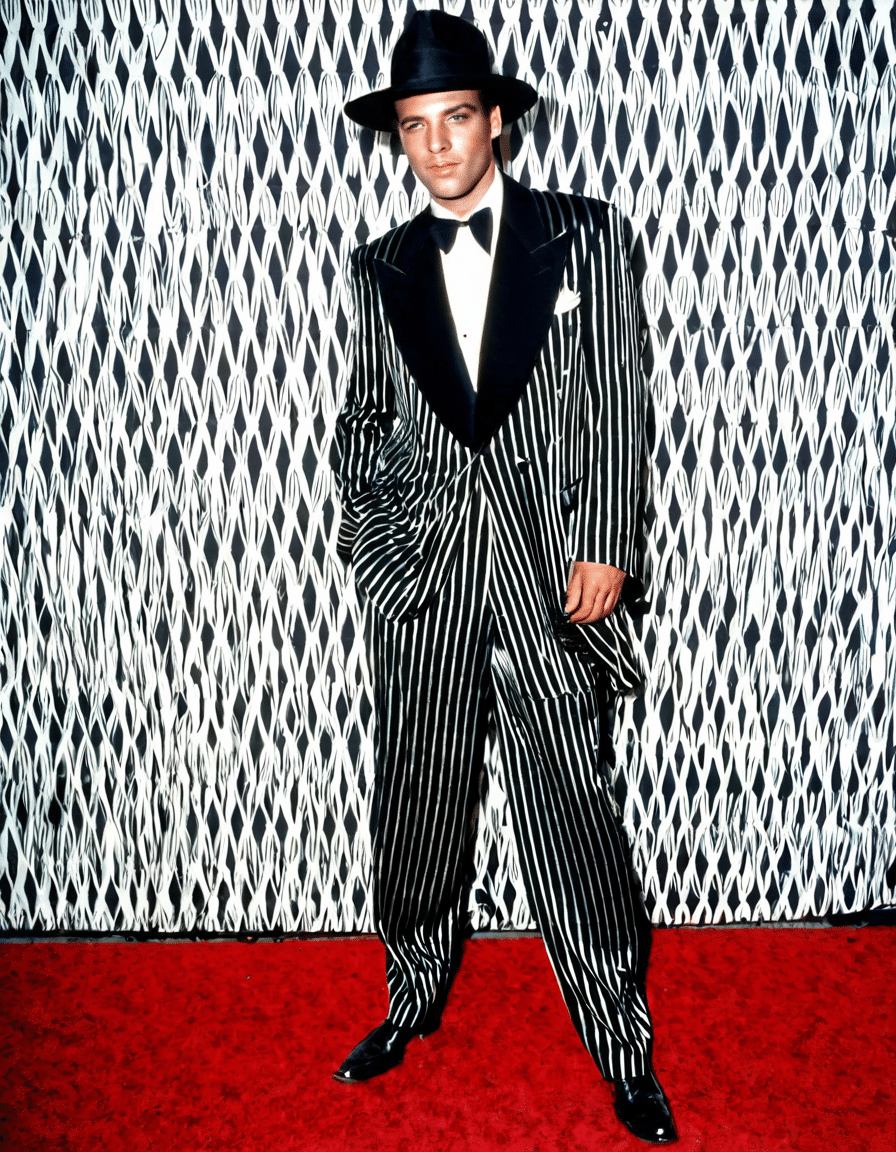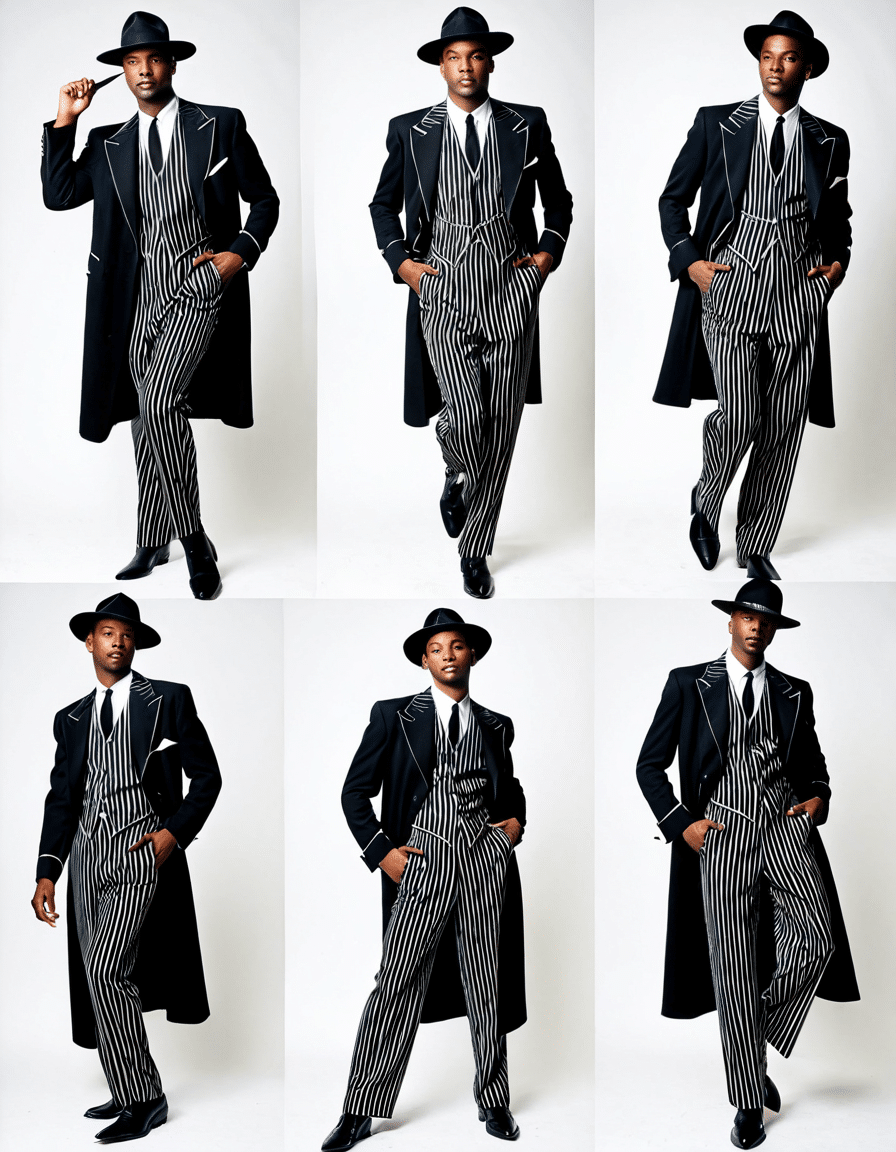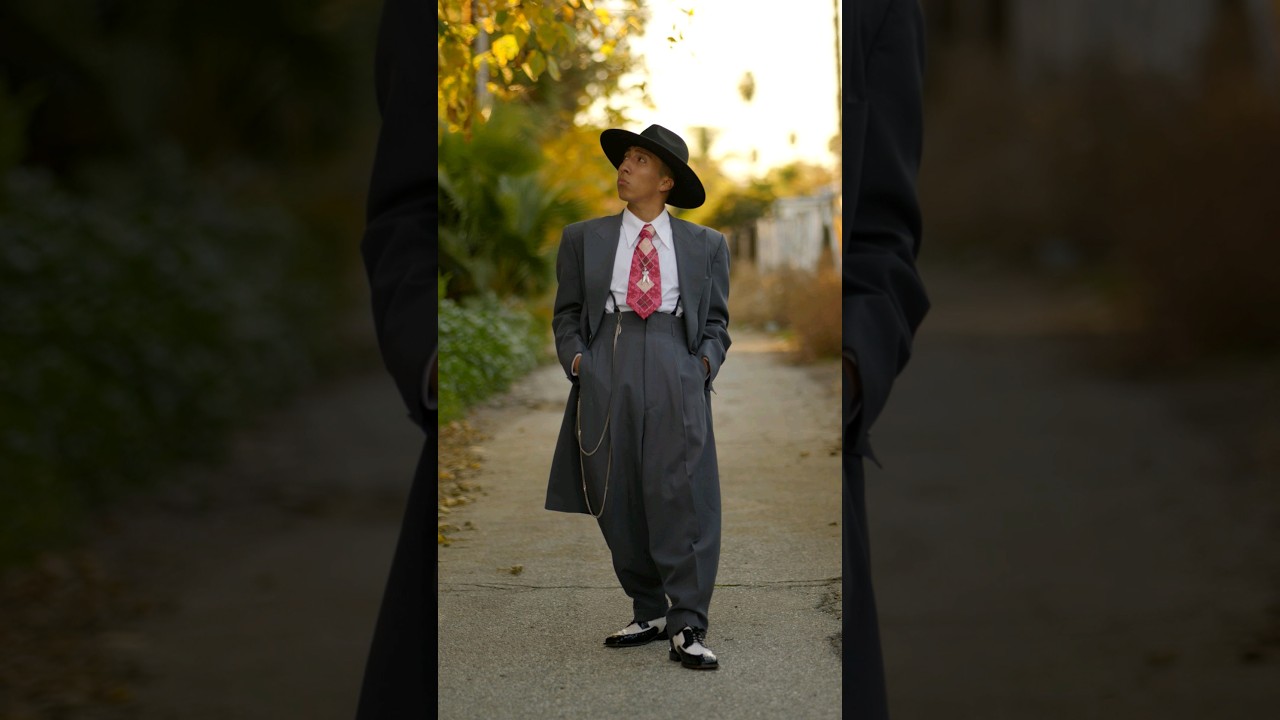Fashion isn’t just fabric and stitches; it tells stories, and the zoot suit is one of the loudest voices in the American style lexicon. Originating in the 1930s, this vibrant ensemble became a symbol of identity, culture, and rebellion for marginalized communities. Picture towering pants, long coats, and bold colors—this wasn’t your grandpa’s suit. The zoot suit was a head-turner, shouting individuality like it owned the stage. It fused together the influences of African American, Mexican American, and jazz cultures, marking it as a significant cultural footprint of its time. Let’s explore how this flamboyant fashion phenomenon reshaped America and its modern legacy.
1. The Origins of the Zoot Suit: A Cultural Blend
Back in the 1930s, America was grappling with economic strains and racial tensions. Amidst all this, the zoot suit emerged as a radical form of expression. With high-waisted trousers and oversized jackets, it boldly rejected the conventional style of the day. Designers like Ben Joe Lilu paved the way for this trend, creating outfits that breathed vibrancy into a monochrome world. The style flourished in jazz clubs and dance halls, becoming a visual soundtrack for the sounds of Duke Ellington and the vibrant nightlife.
Wearing a zoot suit was more than a fashion choice; it was a statement against societal norms. Members of marginalized communities found empowerment in this attire, using it to assert their identity amid ongoing discrimination. As war raged on overseas, the zoot suit stood as a banner of freedom in America—undeniably stylish and unapologetically loud.

2. Top 5 Zoot Suit Icons Who Redefined American Fashion
3. The Zoot Suit Riot: Fashion Under Fire
In 1943, things took a sour turn with the zoot suit riots. Tensions boiled over in Los Angeles, with servicemen targeting Mexican American youth for wearing zoot suits. Overnight, the stylish emblem of cultural pride transformed into a contentious backdrop for conflict.
The riots illustrated how something as fundamental as clothing could spark flashes of racial discord. What started as a unique form of self-expression turned into a battleground for identity politics. Authorities began cracking down on zoot suits, but the power they wielded wasn’t easily dismissed.
Even now, this dark chapter serves as a reminder of how fashion can resonate with broader cultural conversations. The zoot suit, once a symbol of rebellion, now evokes discussions on racial identity and respect for cultural heritage.

4. Modern Interpretations: Zoot Suit in Contemporary Fashion
Fast forward to today, and the zoot suit is witnessing a revival. Luxury brands like Gucci and Prada have expertly manipulated this oversized silhouette, reintroducing it on modern runways. Street style is increasingly embracing the zoot suit as designers integrate its boldness into everyday fashion.
Fans of pop culture can find glimmers of the zoot suit in unexpected places. In Super Mario Odyssey, characters flaunt outfits reminiscent of the zoot suit during certain levels. It’s amazing to see how such a culturally charged piece can pop up in the vibrant world of video games.
Even in Ninjago and Teenage Mutant Ninja Turtles, elements of zoot suit design appear, showcasing a playful rebellion against tradition. These animated heroes connect with the essence of zoot suits, imparting lessons about individuality and courage for younger generations.
5. Why Zoot Suits Matter Today: An Ongoing Legacy
Let’s not underestimate the zoot suit’s relevance in today’s fashion discourse. Events like the “Zoot Suit Ball” breathe life into this rich history, creating spaces that honor the blend of tradition and contemporary style.
With the rise of vintage fashion, the zoot suit represents a historical artifact brimming with stories of identity and social struggle. Designers worldwide are pulling inspiration from these timeless pieces, delivering modern iterations that resonantly connect with young audiences all over again.
By 2026, the zoot suit will remain emblematic of defiance and creativity as it fuses cultural influences with modern aesthetics. Its evolution tells a compelling narrative of how fashion remains intertwined with social movements, making every stitch a piece of history. As we continue to celebrate the diversity of identities through fashion, the legacy of the zoot suit serves as a guiding beacon of resilience, pride, and unfiltered expression.
Fashion lives on, and the zoot suit’s roar isn’t fading anytime soon. So don your wide lapels, strut with flair, and remember that, through style, we tell stories—loud, proud, and unabashed.
Zoot Suit Fashion That Changed American Style Forever
The Birth of the Zoot Suit
The zoot suit burst onto the fashion scene in the 1930s, quickly morphing into a symbol of cultural identity and resistance. Characterized by its high-waisted, wide-legged trousers and oversized jacket, the zoot suit was more than just clothing; it represented a bold statement against societal norms. This eye-catching style found popularity particularly within the African American, Latino, and Italian American communities. Those donning the zoot suit often felt a sense of empowerment, proudly displaying colors and patterns that turned heads on the streets. Speaking of fashion, did you hear about the latest adventures in Glamping Texas? It’s a modern twist on enjoying the outdoors, much like how the zoot suit was a fresh approach to 1940s style.
Zoot Suits and Social Movements
In a twist of irony, the zoot suit also became entwined with significant social movements. The suit faced backlash during WWII for being unpatriotic due to the fabric restrictions, fueled by material shortages. Many felt that a flashy zoot suit clashed with wartime austerity. This tension culminated in the infamous Zoot Suit Riots of 1943, where servicemen clashed with zoot suiters in a racially charged atmosphere. Did you know that actor Don Omar has his own vibrant style that channels some of this boldness in contemporary fashion? Just like the zoot suit, he celebrates cultural identity through his music and visuals.
Zoot Suit: Legacy and Modern Influence
Fast forward to the present, the zoot suit’s legacy continues to influence fashion today. With its vibrant patterns and unique silhouettes, elements of the zoot suit can be seen in various styles—ranging from streetwear variations to high fashion runways. This classic ensemble’s essence embodies confidence and individuality, resonating with those who want to stand out. Interestingly, while sipping a hello kitty cinnamon roll latte, you might see someone rocking a modern take on this iconic style, proving that fashion is indeed cyclical. In the same vein, if you’re a sports fan, you might find parallels with Daniel Cormiers distinctive fight gear—it’s all about showcasing personality and flair.
The zoot suit remains more than just a fashion statement. As styles evolve, the zoot suit serves as a reminder of how clothing can symbolize cultural shifts and identity. Each zoot suit-wearer is a piece of an ongoing story, much like the adventures you might find if you take a thrilling ride in a buggy car. So, next time you see one, remember its history and the bold spirits that wore it before, celebrating their identities just as loudly as today’s fashionistas.


![Zoot Suit (1981) Original Trailer [FHD]](https://www.cinephilemagazine.com/wp-content/cache/flying-press/55d34f1cd856fb5575f129606b473c49.jpg)
![A Zoot Suit (with a A Reet Pleat) [1942] | Dorothy Dandridge & Paul White](https://www.cinephilemagazine.com/wp-content/cache/flying-press/767cc3a096b96d2c9e9c6777e2a29c02.jpg)




